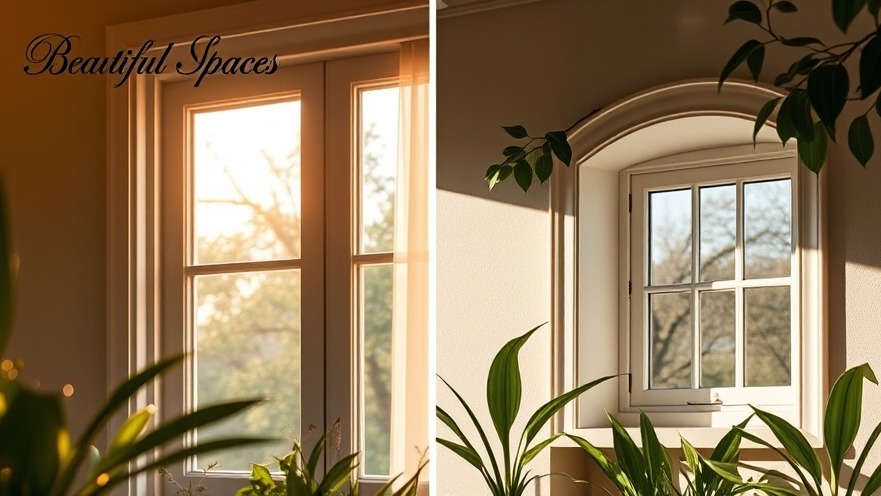
Understanding the Building Blocks: Window Jambs and Reveals
When it comes to home renovations and maintenance, knowledge is power, especially regarding windows—a feature integral to aesthetics and function. Two terms often mentioned yet frequently confused are window jamb and window reveal. As homeowners, builders, or DIY enthusiasts, understanding these elements can transform how you approach window installations or upgrades.
The Core Function of a Window Jamb
A window jamb serves as the vertical side of the window frame, providing critical support for the entire window structure. Typically constructed from durable materials like wood, metal, or uPVC, jambs not only support the window sash but also aid in the smooth operation of operable windows. Properly designed jambs enclose essential window hardware—like tracks and balances—that contribute to the window's functionality and energy efficiency. They help in sealing away draughts, ensuring your home remains warm—a timely consideration for homeowners looking to maintain comfort.
What Exactly is a Window Reveal?
Contrasting with the functional role of the jamb, the window reveal refers to the aesthetic element surrounding a window. It is the visible area extending from the edge of the window frame into the interior of the room. Finished with materials like plaster or timber, reveals offer both charm and practicality. They cover any unsightly gaps between the wall and window frame, enhancing insulation and minimizing condensation. Properly designed reveals can seamlessly integrate with the home’s architecture, thereby elevating curb appeal.
Key Differences: Function Meets Design
The pivotal distinction between jambs and reveals lies in their purpose and functionality. Window jambs are essential for structural integrity and window operation, while window reveals focus on the visual and aesthetic aspect of the installation. A sturdy jamb is vital for a window's durability, while a well-finished reveal serves to enhance the home’s charm and thermal performance.
Why This Knowledge is Crucial for Homeowners
Understanding the critical differences between a window jamb and a reveal could save homeowners significant time and money in maintenance. For instance, if you're facing difficulties such as a window that won’t open smoothly, the issue may lie in the jamb rather than the reveal. Conversely, if you're noticing draughts, the reveal would likely need attention. A clear grasp of these components empowers homeowners to undertake informed decisions about renovations and repairs, ensuring ultimately a well-constructed and visually appealing window installation.
Practical Tips for Window Installation
As you plan your next window project, consider expert insights highlighted in guides like the one by Family Handyman. They emphasize that addressing the jamb first is crucial before focusing on the reveal. Measure carefully, mark reveals on the jambs, and ensure your window is fitted within the specified insulation zone—a step that significantly impacts energy efficiency.
Current Trends in Window Designs
Homeowners today are increasingly conscious of both aesthetics and efficiency when it comes to windows. With transitions towards environmentally friendly materials and designs, opting for products that enhance thermal performance not only benefits the individual homeowner but also contributes positively to the broader community. For instance, employing cavity closers or insulated frames aligns with modern construction practices that mitigate thermal bridging while enhancing the overall durability of installed windows — a win-win for comfort and sustainability.
Conclusion: Prioritize Understanding
In wrapping up this exploration, gaining a deeper understanding of window jambs and reveals is vital—not only for aesthetics but also for functionality and energy efficiency. With clear knowledge of their differences and roles, homeowners can confidently engage in renovation projects, ensuring that every window installation enhances both the appearance and functionality of their beloved homes.
As you embark on your next DIY adventure or consider hiring a professional, remember that thoughtfully built components transition your renovation dreams into reality, leading you to a more efficient and beautiful home.
 Add Row
Add Row  Add
Add 


Write A Comment